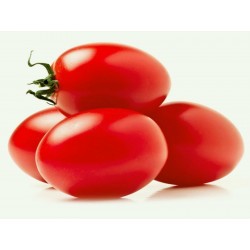Menu
-
MenuНазад
- Home
-
Категорії
-
-
Категорії
-
Насіння овочів
-
Сорти за країнами
- Сорти з Вірменії
- Сорти з БіГ
- Сорти з Хорватії
- Сорти з Франції
- Varieties from Germany
- Varieties from Greece
- Varieties from Hungary
- Сорти з Індії
- Varieties from Italy
- Сорти з Японії
- Сорти з Північної Македонії
- Varieties from Peru
- Varieties from Russia
- Varieties from Serbia
- Сорти зі Словенії
- Varieties from Spain
- Varieties from Thailand
- Сорти з Туреччини
- Varieties from USA
- Насіння томатів
- Насіння кукурудзи
- Сімейство гарбузових
- Родина бобових
- Насіння огірків
- Насіння болгарського перцю
- Сім'я морквяних
- Родина цибулевих
- Насіння салату
- Родина картопляних
- Сімейство капустяних
- Насіння редьки
- Родина бурякових
- Насіння кавуна
- Насіння дині
- Насіння цвітної капусти
- Родина соняшникових
-
Сорти за країнами
- Насіння фруктів
- Насіння перцю чилі
- Насіння лікарських трав
- Насіння рослин лазіння
- Дерева - Чагарник - Насіння
- Пальмове насіння
- Насіння декоративних трав
- Насіння тютюну
-
Насіння овочів
-
-
-
-
- НОВІ ПРОДУКТИ
- Доставка - Оплата
- Створити рахунок
- FAQ
- На Головну
-
- Великі пакети насіння
- Насіння гігантських рослин
- Насіння овочів
- Сорти за країнами
- Сорти з Вірменії
- Сорти з БіГ
- Сорти з Хорватії
- Сорти з Франції
- Varieties from Germany
- Varieties from Greece
- Varieties from Hungary
- Сорти з Індії
- Varieties from Italy
- Сорти з Японії
- Сорти з Північної Македонії
- Varieties from Peru
- Varieties from Russia
- Varieties from Serbia
- Сорти зі Словенії
- Varieties from Spain
- Varieties from Thailand
- Сорти з Туреччини
- Varieties from USA
- Насіння томатів
- Насіння кукурудзи
- Сімейство гарбузових
- Родина бобових
- Насіння огірків
- Насіння болгарського перцю
- Сім'я морквяних
- Родина цибулевих
- Насіння салату
- Родина картопляних
- Сімейство капустяних
- Насіння редьки
- Родина бурякових
- Насіння кавуна
- Насіння дині
- Насіння цвітної капусти
- Родина соняшникових
- Сорти за країнами
- Насіння фруктів
- Насіння перцю чилі
- Насіння лікарських трав
- Насіння рослин лазіння
- Дерева - Чагарник - Насіння
- Бананове насіння
- Пальмове насіння
- Насіння декоративних трав
- Насіння тютюну
- Насіння квітів
- Насіння кактусів
- Поливати насіння рослин
- Інструкція з посіву
- Форми для овочів та фруктів
- Грибний міцелій
- Висадити бульби
- Насіння бамбука
- Аюрведичні рослини
- Гібридне насіння F1
- Упаковка та інше
- Холодостійкі рослини
- Догляд за рослинами
- Органічні спеції
- Доставка - Оплата
- Немає PayPal та оплати карткою X
Last Product Reviews
Out of the two seeds, one germinated and the other one was dead and floatin...
By
 Riikka H on 07/03/2024
Riikka H on 07/03/2024
Verified Purchase
Лідери продажів
Знайдено товарів: 1308.
Показати 1276-1290 з 1308 товарів
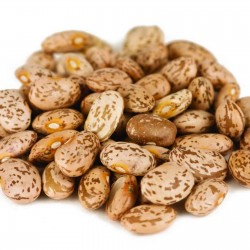
Pinto Bean Seeds (Phaseolus...
Ціна
2,00 €
(SKU: VE 141 (8g))
Seeds Gallery EU,
5/
5
<div id="idTab1" class="rte">
<h2 id="short_description_content"><strong>“Pinto” Bean Seeds (Phaseolus vulgaris)</strong></h2>
<h2 class=""><span style="color: #ff0000;"><strong>Price for Package of 20 seeds.</strong></span></h2>
<p>The pinto bean is a variety of common beans (Phaseolus vulgaris). It is the most common bean in the United States[1] and northwestern Mexico,[2] and is most often eaten whole in broth or mashed and refried. Either whole or mashed, it is a common filling for burritos. The young pods may also be harvested and cooked as green pinto beans.</p>
<p>In Spanish, they are called frijol pinto, literally "speckled bean", and in South America it is known as the "poroto frutilla", literally "strawberry bean". In Portuguese, they are called feijão carioca in Brazil (literally "carioca bean") and feijão catarino in Portugal. It is named for its mottled skin (compare pinto horse), hence it is a type of mottled bean.</p>
<p>This is the bean most commonly used for refried beans (fresh or canned) and in many dishes. Rice and pinto beans served with cornbread or corn tortillas are often a staple meal where meat is unavailable; the amino acids in this combination make it a complete protein source. This variety is often used in chili con carne, although the kidney bean, black bean, and many others may also be used in other locales.</p>
<p>Pinto beans are commonly eaten beans in Brazilian cuisine (legumes, mainly common bean, are a staple food everywhere in the country, cultivated since 3000 BCE, along with starch-rich foods, such as rice, manioc, pasta and other wheat-based products, polenta and other corn-based products, potatoes and yams).</p>
<p>In the southeastern part of the United States, pinto beans were once a staple of the people, especially during the winter months. Some churches in rural areas still sponsor "pinto bean suppers" for social gatherings and fund raisers.</p>
<p>The alubia pinta alavesa, or the "Alavese pinto bean", a red variety of the pinto bean, originated in Añana,[3] a town and municipality located in the province of Álava, in the Basque Country of northern Spain. In October, the Feria de la alubia pinta alavesa (Alavese pinto bean fair) is celebrated in Pobes.</p>
</div><script src="//cdn.public.n1ed.com/G3OMDFLT/widgets.js"></script>
VE 141 (8g)


White Lisbon Bunching Onion...
Ціна
1,95 €
(SKU: MHS 144)
Seeds Gallery EU,
5/
5
<h2><strong>Onion Seed White Lisbon (Allium cepa)</strong></h2>
<h2><span style="color: #ff0000;">Price for Package of 250 (1 g) seeds.</span></h2>
<p>The White Lisbon is an old favourite and ever-popular very quick growing salad spring onion. It is a hardy and reliable variety which features long white stems with bright green tops. It is quick and easy to grow, cropping in 60 days. Although, traditionally the most popular Spring Onion for successional sowings from March to September, it can also be sown in autumn and overwintered for early spring harvests. They are perfect for container growing and can be tucked into mixed containers or beds</p>
<p>White Lisbon is Indispensable for a decent salad, with silvery skin and crisp, succulent stems that have a mild onion flavour with that characteristic 'bite'. Delicious when young, they take on a more pungent flavour as the bulbs swell. Sow little and often, fortnightly from March onwards, will give a good supply through the summer.</p>
<p><strong>Preparation: <br /></strong>An ideal position would be an open, sunny site with good drainage which has been dug and manured in the previous autumn. Do not plant or sow on the freshly manured bed. <br />Avoid planting in an area where the previous crop was of the onion family. Many exhibitors grow their show onions in a permanent bed in order to build up fertility, but in the kitchen plot, it is a much better idea to change the site annually.<br />Onions prefer a neutral to slightly alkaline soil so lime if the soil is acid. Apply a general fertiliser if needed and rake the surface when the soil is reasonably dry. Tread over the area and then rake again to produce a fine, even tilth.</p>
<p><strong>Sowing:</strong></p>
<p>Sow in autumn or sow successionally from late winter to late summer. <br />In cold areas and for exhibition bulbs sow under glass in January,<br />Sow thinly 12mm (½in) deep in either narrow or broad drills allowing 15 to 23cm (6 to 9in) between drills. No thinning is necessary. <br />The seed germinates over a wide range of temperatures and is faster at higher temperatures. Sow every 3 weeks for continuous crops.</p>
<p><strong>Cultivation: <br /></strong>Keep well watered for best quality crops, especially during spells of dry weather. It will stand well for long periods if kept well watered. Hoe carefully or weed by hand – dense weed growth will seriously affect yield.</p>
<p><strong>Harvesting:</strong></p>
<p>60 days<br />Harvest as required from May to October, later sowings may remain through to December if the weather remains mild. Best when used immediately though they will keep in the fridge for a few days.</p>
<p><strong>Culinary Use: <br /></strong>Spring onions can be used for so much more than just adding to your Peking Duck pancakes. When raw or very lightly cooked they impart a wonderfully vibrant yet mild flavour where normal onions would be overpowering. Make some champ by folding chopped spring onions into creamy mashed potatoes - add some grated cheddar if you like - and marvel at how such a simple dish can taste so fantastic. Or combine with ginger to form the soul of a number of classic Chinese and Japanese dishes. <br />Trim off the root and about a centimetre from the green tops. The bulb area can be eaten raw or cooked but the tops are best when chopped and added to a dish just before serving.<br />Store in the fridge for up to four days.</p>
<p><strong>Nutrition: <br /></strong>For years onions have been used as one of the oldest medicines for their anti-bacterial, antiseptic and anti-asthmatic properties. They have also shown to lower blood pressure and cholesterol levels.</p>
<p><strong>Pest Repellent: As<br /></strong> a member of the allium family, they will help to deter most insects, including aphids, mosquitoes, carrot flies and tomato pests. They are also useful in the fight against, moles, mice slugs and weevils!</p>
<p><strong>Rotation considerations: <br /></strong>Avoid following onions, shallots, garlic or chives.</p>
<p><strong>Good Companions: <br /></strong>Beet, carrot, celery, parsley and tomato.</p>
<p><strong>Bad Companions: <br /></strong>Alfalfa, beans, peas - Onions inhibit the growth of legumes.</p>
<p><strong>History: <br /></strong>Eaten and cultivated since prehistoric times, onions were mentioned in the first dynasty of ancient Egypt, circa 3200 BC, and have appeared in tomb paintings, inscriptions and documents from that time on. Some paintings depict onions heaped onto banquet tables, both the robust bulb onions as well as scallions. <br />The spring onion is believed to have originated in the Far East. Chives and spring onion are recorded in Chinese history from 2000 BC. <br />They were grown in Ancient Egypt, and eventually arrived in Rome and became known as the word onion from the Latin word <em>Unio </em>, which means 'large pearl'. In Middle English, it became unyon, as time passed the word developed into the onion.</p>
MHS 144 (250 S)

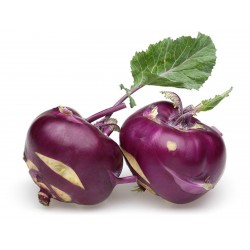
Kohlrabi Seeds Purple Vienna
Ціна
1,45 €
(SKU: VE 120 (1g))
Seeds Gallery EU,
5/
5
<h2><strong>Kohlrabi Seeds Purple Vienna</strong></h2>
<h2><span style="color:#ff0000;"><strong>Price for Package of 250 (1 g) seeds.</strong></span></h2>
<p>There are only two kohlrabies that I would recommend for the small garden, the Purple Vienna and the White Vienna. Both of these were considered “breakthrough” varieties since they were so superior to the sorts that had been grown up to the time of their introduction. They were illustrated in color. Album Vilmorin, the purple variety in 1863 and the white one in 1869, which only added to their acclaim. In 1773 Benjamin Franklin sent John Bartram seeds for a coarse variety of “Cabbage Turnip,” recommending it as a fodder crop for cattle. There are several old large-rooted varieties that would serve this purpose, but the two Vienna sorts, dating from the 1840s, are small and delicate. When young, they can even be eaten raw.</p>
<p>There is no difference between the two except in color. The purple one is shown here, at its peak of perfection for harvesting. The culture is the same as that for cabbage, except that kohlrabies can be planted much closer together, about 8 inches apart. I interplant them with leeks so that as the kohlrabies finish in June, the leeks grow and fill the space. Kohlrabies are best planted early, as soon as the threat of frost has passed. They mature quickly and will turn woody in hot weather. They can be planted again in mid-August for a fall harvest but should be gathered before a hard freeze. Freezing will split them.</p>
<p>Kohlrabies are normally peeled before they are cooked. They can be used like turnips, except that the flavor is much more delicate. But why waste the peelings? The Pennsylvania Dutch spread them on paper and dry them. Once dry, they can be stored in airtight jars and used during the winter to make soup. Certainly! Pour boiling water over the dried peelings and let them reconstitute. Simmer until the stock is completely flavored by the kohlrabi peels (about 25 minutes), then strain and discard the peels. This makes an excellent base stock for vegetarian soups.</p>
VE 120 (1g)

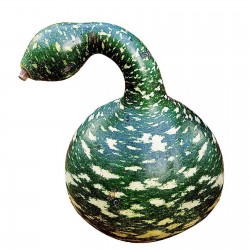
Насіння кабачків гусячої шиї
Ціна
2,75 €
(SKU: VG 55)
Seeds Gallery EU,
5/
5
<div id="idTab1" class="rte">
<h2><strong>Насіння кабачків гусячої шиї</strong></h2>
<h2><span style="color: #ff0000;"><strong>Ціна за упаковку з 5 насінин.</strong></span></h2>
<p>Дуже привабливі осінньо-зимові прикраси. Ви будете в захваті від цього гарбуза. Цей незвичайний і важкодоступний гарбуз нагадує гусака, звідси і його назва! Товстий пляшковий черевце з тонкою шийкою і широкою головою темно-зеленого кольору зі світлими плямами. Підходить для швидкого озеленення альтанок, парканів і шпалер. Плоди химерної форми ідеально підходять для прикраси та рукоділля.</p>
<p>Гарний свіжий або сушений для привабливих осінніх та зимових прикрас</p>
<p>Посів під скло: лютий - квітень<br />Висівають у відкритий грунт: з травня<br />Відстань посадки: 40 см х 60 см<br />Глибина посіву: 2 см<br />Термін проростання: 6 - 15 днів при 20 - 25°C</p>
</div>
VG 55 (5 S)


Рослина стійка до холодів і морозів

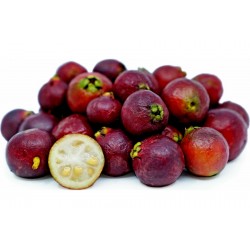
Strawberry Guava Seeds...
Ціна
3,25 €
(SKU: V 89)
Seeds Gallery EU,
5/
5
<!DOCTYPE html>
<html>
<head>
<meta http-equiv="Content-Type" content="text/html; charset=UTF-8" />
</head>
<body>
<h2><span style="text-decoration: underline;"><em><strong>Strawberry Guava Seeds , Cattley guava or Peruvian guava (Psidium cattleianum)</strong></em></span></h2>
<h3><span style="color: #ff0000;"><strong>Price for Package of 5 seeds.</strong></span></h3>
<p><span style="color: #000000;"><span style="font-family: Arial, sans-serif;"><span><strong>Fruit Description:</strong> Appearing in late Summer, they are small red fruit, very tasty, when ripe. Usually eaten fresh or used to flavor beverages, ice creams, desserts and jams. Strawberry guavas taste like a passionfruit mixed with strawberry. The skin is also edible and tastes a bit like rose petals but is best removed for a sweeter flavour. The seeds are small and white in colour and can be roasted as a substitute for coffee.</span></span></span></p>
<p><span style="color: #000000;"><span style="font-family: Arial, sans-serif;"><span><strong>Growth tips:</strong> Fast grower, fast to fruit, provide ample nutrition and water.</span></span></span></p>
<p><span style="color: #000000; font-family: Arial;"><strong>Usage</strong>: This plant is attractive to bees, butterflies and/or birds. Suitable for growing indoors</span></p>
<p xml:lang="en" lang="en" align="left"><span style="color: #000000;"><span style="font-family: Arial, sans-serif;"><span><strong>Aditional information: </strong>Psidium cattleianum is closely related to common guava (P. guajava), but can survive under lopwer temperatures. This plant is attractive to bees, butterflies and/or birds.</span></span></span></p>
<p xml:lang="en" lang="en" align="left"><strong><span style="color: #000000;"><span style="font-family: Arial, sans-serif;">Wikipedia:</span></span></strong></p>
<div>Psidium cattleianum,[1][2] named in honour of notable English horticulturist Sir William Cattley, commonly known as Cattley guava or Peruvian guava, is a small tree (2–6 m tall), bearing small red or yellow fruit, which are somewhat sour but sometimes eaten or made into jam. The red-fruited variety is known as strawberry guava; the yellow-fruited variety is known as lemon guava, and in Hawaii as waiawī. Native to Brazil and adjacent tropical South America, it is closely related to common guava (P. guajava), and like that species is a widespread, highly invasive species in tropical areas, especially Hawaiʻi. It tends to form dense, monotypic stands which prevent regrowth of native species, and is very difficult to eradicate; it also provides refuge for fruit flies which cause extensive agricultural damage.[3] As an invasive species, it is sometimes erroneously called Chinese guava.</div>
<p>The fruit can be eaten whole as both the thin skin and soft, juicy interior are edible. Strawberry guavas taste like a passionfruit mixed with strawberry; lemon guavas have a more acidic and spicier flavour. The skin is also edible and tastes a bit like rose petals but is often removed for a sweeter flavour. The seeds are small and white in colour and can be roasted as a substitute for coffee. Its leaves may be brewed for tea.</p>
<table style="width: 500px;" cellspacing="0" cellpadding="0" border="1">
<tbody>
<tr>
<td colspan="2" width="100%" valign="top">
<p align="center"><span style="color: #008000;"><strong>Sowing Instructions</strong></span></p>
</td>
</tr>
<tr>
<td valign="top" nowrap="nowrap">
<p align="center"><span style="color: #008000;"><strong>Propagation:</strong></span></p>
</td>
<td valign="top">
<p align="center"><span style="color: #008000;">Seeds</span></p>
</td>
</tr>
<tr>
<td valign="top" nowrap="nowrap">
<p align="center"><span style="color: #008000;"><strong>Pretreat:</strong></span></p>
</td>
<td valign="top">
<p align="center"><span style="color: #008000;">soak in water for 12-24 hours</span></p>
</td>
</tr>
<tr>
<td valign="top" nowrap="nowrap">
<p align="center"><span style="color: #008000;"><strong>Stratification:</strong></span></p>
</td>
<td valign="top">
<p align="center"><span style="color: #008000;">0</span></p>
</td>
</tr>
<tr>
<td valign="top" nowrap="nowrap">
<p align="center"><span style="color: #008000;"><strong>Sowing Time:</strong></span></p>
</td>
<td valign="top">
<p align="center"><span style="color: #008000;">all year round</span></p>
</td>
</tr>
<tr>
<td valign="top" nowrap="nowrap">
<p align="center"><span style="color: #008000;"><strong>Sowing Depth:</strong></span></p>
</td>
<td valign="top">
<p align="center"><span style="color: #008000;">0,5 cm</span></p>
</td>
</tr>
<tr>
<td valign="top" nowrap="nowrap">
<p align="center"><span style="color: #008000;"><strong>Sowing Mix:</strong></span></p>
</td>
<td valign="top">
<p align="center"><span style="color: #008000;">Coir or sowing mix + sand or perlite</span></p>
</td>
</tr>
<tr>
<td valign="top" nowrap="nowrap">
<p align="center"><span style="color: #008000;"><strong>Germination temperature:</strong></span></p>
</td>
<td valign="top">
<p align="center"><span style="color: #008000;">18-25°C</span></p>
</td>
</tr>
<tr>
<td valign="top" nowrap="nowrap">
<p align="center"><span style="color: #008000;"><strong>Location:</strong></span></p>
</td>
<td valign="top">
<p align="center"><span style="color: #008000;">bright + keep constantly moist not wet</span></p>
</td>
</tr>
<tr>
<td valign="top" nowrap="nowrap">
<p align="center"><span style="color: #008000;"><strong>Germination Time:</strong></span></p>
</td>
<td valign="top">
<p align="center"><span style="color: #008000;">10 - 45 days</span></p>
</td>
</tr>
<tr>
<td valign="top" nowrap="nowrap">
<p align="center"><span style="color: #008000;"><strong>Watering:</strong></span></p>
</td>
<td valign="top">
<p align="center"><span style="color: #008000;">Water regularly during the growing season</span></p>
</td>
</tr>
<tr>
<td valign="top" nowrap="nowrap"> </td>
<td valign="top">
<p align="center"><br /><span style="color: #008000;"> <em>Copyright © 2012 Seeds Gallery - Saatgut Galerie - Galerija semena. </em><em>All Rights Reserved.</em></span></p>
</td>
</tr>
</tbody>
</table>
</body>
</html>
V 89 R


Сорт із Сербії

Рослина стійка до холодів і морозів
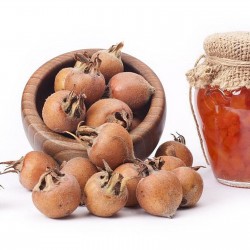
Насіння Мушмула звичайна...
Ціна
1,85 €
(SKU: V 92 (2.5g))
Seeds Gallery EU,
5/
5
<h2><strong>Насіння Мушмула звичайна (Mespilus germanica)</strong></h2>
<h2><span style="color: #ff0000;"><strong>Ціна за упаковку 10 насінин.</strong></span></h2>
<p style="color: #202122; font-size: 14px;"><b>Мушмула звичайна</b><sup id="cite_ref-1" class="reference"></sup><sup id="cite_ref-2" class="reference"></sup><span> </span>(<i>Mespilus germanica L</i>.) — дерево або кущ з родини трояндових, 3—4 м заввишки. Дико росте в південному<span> </span>Криму, там таки мушмулу звичайну вирощують по садах. Плоди її споживають свіжими й солять, з них виготовляють пастилу й вино.</p>
<h2 style="color: #000000; font-size: 1.5em;"><span class="mw-headline" id="Поширення">Поширення</span></h2>
<p>Свою назву мушмула німецька отримала незаслужено, адже це дерево походить з<span> </span>Південно-Західної Азії<span> </span>й<span> </span>Південно-Східної Європи<span> </span>та було завезено до Німеччини римлянами. Згодом епітет «германська» став видовою назвою рослини. Мушмулі германській необхідне тепле літо і м'яка зима. Мушмула в дикому виді росте також на південному березі Криму, в Грузії, Вірменії та Азербайджані. Поодинокі рослини зустрічаються в садозахисних насадженнях центральних районів<span> </span>України<span> </span>(наприклад, в місті<span> </span>Умань, куди рослину було завезено в радянські часи як слаборослу підщепу для груші). Вона надає перевагу сонячним сухим місцям та слабокислому ґрунту. В<span> </span>Алжирі<span> </span>дуже часто зустрічається в садах будинків колоніальних часів у передмістях великих міст.</p>
<h2 style="color: #000000; font-size: 1.5em;"><span id=".D0.91.D0.BE.D1.82.D0.B0.D0.BD.D1.96.D1.87.D0.BD.D0.B8.D0.B9_.D0.BE.D0.BF.D0.B8.D1.81"></span><span class="mw-headline" id="Ботанічний_опис">Ботанічний опис</span></h2>
<div class="thumb tright">
<div class="thumbinner" style="font-size: 13.16px;"><img alt="Illustration Mespilus germanica0.jpg" src="https://upload.wikimedia.org/wikipedia/commons/thumb/a/a5/Illustration_Mespilus_germanica0.jpg/220px-Illustration_Mespilus_germanica0.jpg" decoding="async" width="220" height="347" class="thumbimage" srcset="//upload.wikimedia.org/wikipedia/commons/thumb/a/a5/Illustration_Mespilus_germanica0.jpg/330px-Illustration_Mespilus_germanica0.jpg 1.5x, //upload.wikimedia.org/wikipedia/commons/thumb/a/a5/Illustration_Mespilus_germanica0.jpg/440px-Illustration_Mespilus_germanica0.jpg 2x" data-file-width="1552" data-file-height="2450">
<div class="thumbcaption" style="font-size: 12.3704px;">
<div class="magnify"></div>
</div>
</div>
</div>
<p>Мушмула германська — плодове дерево, що за ідеальних умов виростає до 8 м, але частіше це дерево 2-5 метрів заввишки.<span> </span>Листя<span> </span>дерева темно-зелені еліптичні, 8-15 см завдовжки й 3-4 см шириною, але восени, перед падінням, вони змінюють забарвлення на червоний. П'ятилисткові білі<span> </span>квіти<span> </span>з'являються пізньою весною.<span> </span>Плід<span> </span>червонувато-коричневого кольору, діаметром 2-3 см, з розгорнутими постійними чашолистками, що надають йому порожнистого вигляду. Плоди мушмули німецької тверді та кислі. Вони придатні до вживання в їжу лише після підзаморозки або тривалого зберігання (у тому випадку якщо плоди знімаються з дерева до настання заморозків). При цьому вони стають солодкими та м'якими, але набувають зморшкуватої структури та зменшуються в об'ємі.</p>
<h2 style="color: #000000; font-size: 1.5em;"><span id=".D0.9A.D1.83.D0.BB.D1.8C.D1.82.D0.B8.D0.B2.D1.83.D0.B2.D0.B0.D0.BD.D0.BD.D1.8F"></span><span class="mw-headline" id="Культивування">Культивування</span></h2>
<p>Мушмула германська культивується вже 3000 років в прикаспійських областях Азербайджану. Вона стала вирощуватись древніми греками близько 700 р. до н. е. й древніми римлянами близько 200 р. до н. е. В давньоримську та середньовічну епохи ця рослина була найважливішою плодовою культурою. Однак у 17—18 ст. інтерес до неї поступово згасав, і вона замінялась іншими культурами, а в теперішній час культивується доволі рідко.</p><script src="//cdn.public.n1ed.com/G3OMDFLT/widgets.js"></script>
V 92 (2.5g)


Лікарська або пряна рослина

Рослина стійка до холодів і морозів
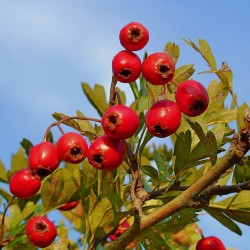
Насіння Глід (Crataegus)
Ціна
2,25 €
(SKU: T 43)
Seeds Gallery EU,
5/
5
<h2><strong>Насіння Глід (Crataegus)</strong></h2>
<h2><span style="color: #fe0000;"><strong>Ціна за упаковку з 5 або 10 насінин.</strong></span></h2>
<p style="color: #202122; font-size: 14px;"><b>Глід</b><span> </span>(<i>Crataegus</i>) —<span> </span>рід<span> </span>чагарників<span> </span>або рідше невисоких<span> </span>дерев<span> </span>родини<span> </span>розових<span> </span>(<i>Rosaceae</i>). Відомо понад 200 видів, що поширені у північній півкулі — Європа, Азія, Північна Африка, Північна Америка<sup id="cite_ref-1" class="reference">[1]</sup>. Це<span> </span>кущі,<span> </span>напівкущі<span> </span>або невеликі<span> </span>дерева, листопадні (рідко вічнозелені), з колючками (рідко без колючок).<span> </span>Листки<span> </span>прості, з прилистками; край пильчатий і лопатевий або розділений на частини, рідко цілий.<span> </span>Суцвіття<span> </span>щиткоподібне, іноді квіти поодинокі.<span> </span>Квітка: чашолистиків 5; пелюсток 5, білих, рідше рожевих; тичинок 5–25.<span> </span>Плід<span> </span>— яблуко, зі стійкими чашолистиками на верхівці<sup id="cite_ref-2" class="reference">[2]</sup>.</p>
<h2 style="color: #000000; font-size: 1.5em;"><span class="mw-headline" id="Етимологія">Етимологія</span></h2>
<p style="color: #202122; font-size: 14px;">У більшості слов'янських мов ця рослина має назви, схожі з українською:<span> </span>біл.<span> </span>і<span> </span>болг.<span> </span><i>глог</i>,<span> </span>пол.<span> </span><i lang="pl">głóg</i>,<span> </span>чеськ.<span> </span><i>hloh</i>,<span> </span>словен.<span> </span>і<span> </span>хорв.<span> </span><i>glog</i>,<span> </span>серб.<span> </span><i>глог/glog</i>. Українська форма «глід» з прикінцевим «д» — вторинна, утворена від ранішого<span> </span><i>*глогъ/гліг</i><span> </span>внаслідок<span> </span>дисиміляції<span> </span>(розподібніння звуків). Щодо походження слова «глід» (<i>*глогъ/гліг</i>) існує кілька версій. За першою, воно походить від<span> </span>праслов'янського<span> </span><i>*glogъ</i>, яке споріднене з<span> </span>грец.<span> </span><span lang="el">γλασσα, γλοττα, γλωσσα</span><span> </span>(«язик»),<span> </span><i>γλωχες</i><span> </span>(«вусики колосся»),<span> </span><i>γλωχίς</i><span> </span>(«гострий кінець») і разом з ними виводиться з<span> </span>праіндоєвропейського<span> </span><i>*glogh-/glәgh-</i><span> </span>(«колючка», «гострий предмет»). Друга версія виводить<span> </span><i>*глогъ/глігъ</i><span> </span>від праслов'янського<span> </span><i>*iglogъ</i>, спорідненого з<span> </span><i>*igъla</i><span> </span>(«голка»). Згідно з третьою версією,<span> </span><i>*глогъ/глігъ</i><span> </span>походить від<span> </span><i>*dlogъ</i>, спорідненого з<span> </span><i>*dolka</i><span> </span>(«вістря», «щетина», «волос»). За четвертою версією, праслов'янське<span> </span><i>*glogъ</i><span> </span>запозичене з<span> </span>доіндоєвропейського субстрату, разом з<span> </span>грец.<span> </span><span lang="el">κράταιγος</span><span> </span>(«глід»)<sup id="cite_ref-3" class="reference">[3]</sup>.</p>
<h2 style="color: #000000; font-size: 1.5em;"><span id=".D0.9C.D0.BE.D1.80.D1.84.D0.BE.D0.BB.D0.BE.D0.B3.D1.96.D1.8F"></span><span class="mw-headline" id="Морфологія">Морфологія</span></h2>
<p style="color: #202122; font-size: 14px;">Пагони, як правило, забезпечені більш-менш добре розвиненими колючками (видозмінені укорочені пагони).<span> </span>Листя<span> </span>від цільних до перистолопастних і перисторозсічене.<span> </span>Квітки<span> </span>білі, рідше рожеві до червоних, зазвичай зібрані в напівпарасольки або щиткоподібне<span> </span>суцвіття.<span> </span>Зав'язь<span> </span>нижня.<span> </span>Плід<span> </span>(т. зв. кісточкове яблуко або кістянкоподібний) часто кулястий, яйцеподібний або грушеподібний, більшою частиною червоний, оранжево-бурий або чорний.</p>
<h2 style="color: #000000; font-size: 1.5em;"><span id=".D0.9F.D0.BE.D1.88.D0.B8.D1.80.D0.B5.D0.BD.D0.BD.D1.8F"></span><span class="mw-headline" id="Поширення">Поширення</span></h2>
<p style="color: #202122; font-size: 14px;">Близько 200 (за іншими даними, більше 1000)<span> </span>поліморфних<span> </span>видів, дико ростуть в помірних областях<span> </span>Північної Америки<span> </span>та<span> </span>Євразії.</p>
<h2 style="color: #000000; font-size: 1.5em;"><span id=".D0.97.D0.B0.D1.81.D1.82.D0.BE.D1.81.D1.83.D0.B2.D0.B0.D0.BD.D0.BD.D1.8F"></span><span class="mw-headline" id="Застосування">Застосування</span></h2>
<h3 style="color: #000000; font-size: 1.2em;"><span id=".D0.A3_.D1.85.D0.B0.D1.80.D1.87.D1.83.D0.B2.D0.B0.D0.BD.D0.BD.D1.96"></span><span class="mw-headline" id="У_харчуванні">У харчуванні</span></h3>
<p style="color: #202122; font-size: 14px;">Плоди деяких видів глоду їстівні. На Кавказі і в степовій частині Криму із плодів глоду варять кисіль, концервують з цукром. На Кавказі плоди сушать і перетирають на солодке борошно, з якого печуть млинці, роблять начинку для пирогів, додають у пшеничне борошно, готуючи домашнє печиво.<sup id="cite_ref-4" class="reference">[4]</sup></p>
<p style="color: #202122; font-size: 14px;">Сушені квіти й плоди використовують для приготування чаю.</p>
<h3 style="color: #000000; font-size: 1.2em;"><span id=".D0.A3_.D0.BF.D1.80.D0.BE.D0.BC.D0.B8.D1.81.D0.BB.D0.BE.D0.B2.D0.BE.D1.81.D1.82.D1.96"></span><span class="mw-headline" id="У_промисловості">У промисловості</span></h3>
<p style="color: #202122; font-size: 14px;">Щільна<span> </span>деревина<span> </span>придатна для дрібних виробів. Багато видів декоративні: частина з них добре витримують стрижку і забезпечені розвиненими колючками, у зв'язку з чим використовуються в<span> </span>живоплотах.</p>
<h3 style="color: #000000; font-size: 1.2em;"><span id=".D0.A3_.D0.BC.D0.B5.D0.B4.D0.B8.D1.86.D0.B8.D0.BD.D1.96"></span><span class="mw-headline" id="У_медицині">У медицині</span></h3>
<div class="thumb tright" style="color: #202122; font-size: 14px;">
<div class="thumbinner" style="font-size: 13.16px;"><img alt="" src="https://upload.wikimedia.org/wikipedia/commons/thumb/d/dd/%D0%9F%D0%BB%D0%BE%D0%B4%D0%B8_%D0%B3%D0%BB%D0%BE%D0%B4%D1%83.JPG/220px-%D0%9F%D0%BB%D0%BE%D0%B4%D0%B8_%D0%B3%D0%BB%D0%BE%D0%B4%D1%83.JPG" decoding="async" width="220" height="165" class="thumbimage" srcset="//upload.wikimedia.org/wikipedia/commons/thumb/d/dd/%D0%9F%D0%BB%D0%BE%D0%B4%D0%B8_%D0%B3%D0%BB%D0%BE%D0%B4%D1%83.JPG/330px-%D0%9F%D0%BB%D0%BE%D0%B4%D0%B8_%D0%B3%D0%BB%D0%BE%D0%B4%D1%83.JPG 1.5x, //upload.wikimedia.org/wikipedia/commons/thumb/d/dd/%D0%9F%D0%BB%D0%BE%D0%B4%D0%B8_%D0%B3%D0%BB%D0%BE%D0%B4%D1%83.JPG/440px-%D0%9F%D0%BB%D0%BE%D0%B4%D0%B8_%D0%B3%D0%BB%D0%BE%D0%B4%D1%83.JPG 2x" data-file-width="3072" data-file-height="2304">
<div class="thumbcaption" style="font-size: 12.3704px;">
<div class="magnify"></div>
Плоди глоду</div>
</div>
</div>
<p style="color: #202122; font-size: 14px;">Рідкий<span> </span>екстракт<span> </span>з плодів або<span> </span>настій<span> </span>з квіток<span> </span>глоду колючого<span> </span>і<span> </span>глоду криваво-червоного<span> </span>містить<span> </span>органічні кислоти,<span> </span>вітаміни; застосовують при розладах<span> </span>серцевої<span> </span>діяльності,<span> </span>судинних<span> </span>неврозах,<span> </span>гіпертонічній хворобі<span> </span>та ін.</p>
<h3 style="color: #000000; font-size: 1.2em;"><span id=".D0.A3_.D0.BE.D0.B7.D0.B5.D0.BB.D0.B5.D0.BD.D0.B5.D0.BD.D0.BD.D1.96"></span><span class="mw-headline" id="У_озелененні">У озелененні</span></h3>
<p style="color: #202122; font-size: 14px;">Вирощується у полезахистних смугах в лісостеповій та степовій зонах України.</p><script src="//cdn.public.n1ed.com/G3OMDFLT/widgets.js"></script>
T 43 (10 S)

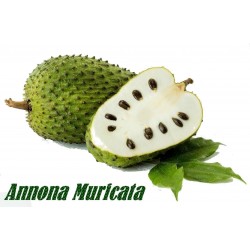
Graviola - Soursop Seeds...
Ціна
3,85 €
(SKU: V 10 AM)
Seeds Gallery EU,
5/
5
<h2><strong>Graviola - Soursop Seeds (Annona Muricata)</strong></h2>
<h2><span style="color:#ff0000;"><strong>Price for Package of 5 seeds.</strong></span></h2>
<p>Annona muricata, the Corossol or Soursop, is a tropical shrub from South America, Asia and Africa. This shrub will grow to a height of 4 to 6 meters high and 3 to 4 meters large. It gives delicious fruits. Annona muricata can even be grown in a pot.</p>
<p>Annona muricata has a cylindrical trunk. The foliage is made of shiny green oblong leaves. A sweet smell emerges from the leaves when they are crushed. The flowers are green-yellow and have a sweet smell. The plant produces green fruits are called soursops. They can weight up to 6 pounds and are covered with soft points. The flesh of the fruit is white and sweet-acidic. It is usually juiced instead of eaten and contains a lot of vitamins.</p>
<p>Annona blooms all year long in tropical regions. In milder climates, it blooms in spring and at the start of summer. It is a deciduous plant, which means that it loses its leaves when it rests. The plant will take 3 to 4 years before producing fruits.</p>
<p>Hardiness zones 10-11 (1°C/35°F,4°C/40°F) in winter. The plant dies when the temperature is below 0°C. Annonas need to be in a situation away from the wind. They are not rustic plants.</p>
<p>The plant thrives in full sun. Watering is done once a week and abundantly. Also, remember to cut the dead branches or the ones that are too low. Keep it far from the cold and the wind.</p>
<p><strong>The Annona can be grown in a pot.</strong></p>
<p><span style="color:#008000;"><strong>Additional Information</strong></span></p>
<table border="0" cellspacing="0" cellpadding="0"><tbody><tr><td>
<p><span style="color:#008000;"><strong>Germination</strong></span></p>
</td>
<td>
<p><span style="color:#008000;">Plant seeds in a good garden soil that is well-drained fertile soil. During growth, use a tutor. The tutor can even be used after growth. Fertilizer can be used once a week during growth. This plant enjoys a sunny spot. Germination takes 15-30 days, it can be longer, don’t get discouraged.</span></p>
</td>
</tr></tbody></table><p></p>
<p><strong>WIKIPEDIA:</strong></p>
<p>Annona muricata is a species of the genus Annona of the custard apple tree family, Annonaceae, known mostly for its edible fruit. The fruit is usually called soursop due to its slightly acidic taste when ripe. A. muricata is native to the Caribbean and Central America but is now widely cultivated – and in some areas, becoming invasive – in tropical climates throughout the world.</p>
<p><strong><em>Description</em></strong></p>
<p><strong>Habit</strong></p>
<p> Annona muricata is a small, upright, evergreen tree that can grow to about 4 metres (13 ft) tall.</p>
<p>Stems and leaves</p>
<p> The young branches are hairy.</p>
<p> Leaves are oblong to oval, 8 centimetres (3.1 in) to 16 centimetres (6.3 in) long and 3 centimetres (1.2 in) to 7 centimetres (2.8 in) wide. Glossy dark green with no hairs above, paler and minutely hairy to no hairs below.</p>
<p> The leaf stalks are 4 millimetres (0.16 in) to 13 millimetres (0.51 in) long and without hairs.</p>
<p><strong>Flowers</strong></p>
<p> Flower stalks (peduncles) are 2 millimetres (0.079 in) to 5 millimetres (0.20 in) long and woody. They appear opposite from the leaves or as an extra from near the leaf stalk, each with one or two flowers, occasionally a third.</p>
<p> Stalks for the individual flowers (pedicels) are stout and woody, minutely hairy to hairless and 15 millimetres (0.59 in) to 20 millimetres (0.79 in) with small bractlets nearer to the base which are densely hairy.</p>
<p> Petals are thick and yellowish. Outer petals meet at the edges without overlapping and are broadly ovate, 2.8 centimetres (1.1 in) to 3.3 centimetres (1.3 in) by 2.1 centimetres (0.83 in) to 2.5 centimetres (0.98 in), tapering to a point with a heart-shaped base. Evenly thick, covered with long, slender, soft hairs externally and matted finely with soft hairs within. Inner petals are oval-shaped and overlap. 2.5 centimetres (0.98 in) to 2.8 centimetres (1.1 in) by 2 centimetres (0.79 in). Sharply angled and tapering at the base. Margins are comparatively thin, with fine matted soft hairs on both sides. The receptacle is conical and hairy. Stamens 4.5 millimetres (0.18 in) long and narrowly wedge-shaped. The connective-tip terminate abruptly and anther hollows are unequal. Sepals are quite thick and do not overlap. Carpels are linear and basally growing from one base. The ovaries are covered with dense reddish-brown hairs, 1-ovuled, style short and stigma truncate.</p>
<p><strong>Fruits and reproduction</strong></p>
<p> Dark green, prickly (or bristled) fruits are egg-shaped and can be up to 30 centimetres (12 in) long, with a moderately firm texture. The flesh is juicy, acid, whitish and aromatic.</p>
<p> Abundant seeds[6] the average weight of 1000 fresh seeds is 470 grams (17 oz) and had an average oil content of 24%. When dried for 3 days in 60 °C (140 °F) the average seed weight was 322 grams (11.4 oz) and was tolerant of the moisture extraction; showing no problems for long-term storage under reasonable conditions.</p>
<p><strong>Medicinal use</strong></p>
<p>An extract from the leaves has been reportedly successful in lowering elevated blood pressure by its decreasing peripheral vascular resistance.</p>
<table border="1" cellspacing="0" cellpadding="0"><tbody><tr><td colspan="2" valign="top" width="100%">
<p><span style="color:#008000;"><strong>Sowing Instructions</strong></span></p>
</td>
</tr><tr><td valign="top" nowrap="nowrap">
<p><span style="color:#008000;"><strong>Propagation:</strong></span></p>
</td>
<td valign="top">
<p><span style="color:#008000;">Seeds / Cuttings</span></p>
</td>
</tr><tr><td valign="top" nowrap="nowrap">
<p><span style="color:#008000;"><strong>Pretreat:</strong></span></p>
</td>
<td valign="top">
<p><span style="color:#008000;">pour hot water over the seeds + soak about 24 h </span></p>
</td>
</tr><tr><td valign="top" nowrap="nowrap">
<p><span style="color:#008000;"><strong>Stratification:</strong></span></p>
</td>
<td valign="top">
<p><span style="color:#008000;">0</span></p>
</td>
</tr><tr><td valign="top" nowrap="nowrap">
<p><span style="color:#008000;"><strong>Sowing Time:</strong></span></p>
</td>
<td valign="top">
<p><span style="color:#008000;">all year round</span></p>
</td>
</tr><tr><td valign="top" nowrap="nowrap">
<p><span style="color:#008000;"><strong>Sowing Depth:</strong></span></p>
</td>
<td valign="top">
<p><span style="color:#008000;">1 cm</span></p>
</td>
</tr><tr><td valign="top" nowrap="nowrap">
<p><span style="color:#008000;"><strong>Sowing Mix:</strong></span></p>
</td>
<td valign="top">
<p><span style="color:#008000;">Coir or sowing mix + sand or perlite</span></p>
</td>
</tr><tr><td valign="top" nowrap="nowrap">
<p><span style="color:#008000;"><strong>Germination temperature:</strong></span></p>
</td>
<td valign="top">
<p><span style="color:#008000;">25 ° C +</span></p>
</td>
</tr><tr><td valign="top" nowrap="nowrap">
<p><span style="color:#008000;"><strong>Location:</strong></span></p>
</td>
<td valign="top">
<p><span style="color:#008000;">bright + keep constantly moist not wet</span></p>
</td>
</tr><tr><td valign="top" nowrap="nowrap">
<p><span style="color:#008000;"><strong>Germination Time:</strong></span></p>
</td>
<td valign="top">
<p><span style="color:#008000;">about 2-6 weeks</span></p>
</td>
</tr><tr><td valign="top" nowrap="nowrap">
<p><span style="color:#008000;"><strong>Watering:</strong></span></p>
</td>
<td valign="top">
<p><span style="color:#008000;">Water regularly during the growing season</span></p>
</td>
</tr><tr><td valign="top" nowrap="nowrap">
<p><span style="color:#008000;"><strong> </strong></span></p>
</td>
<td valign="top">
<p><br /><span style="color:#008000;">Seeds Gallery 05.11.2012.</span></p>
</td>
</tr></tbody></table>
V 10 AM (5 S)

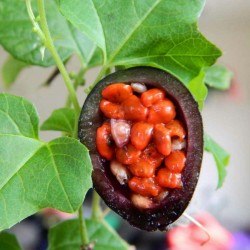
Blue Sweet Calabash Seeds...
Ціна
1,70 €
(SKU: V 18 PMC)
Seeds Gallery EU,
5/
5
<h2><span style="font-size:14pt;font-family:georgia, palatino, serif;"><strong>Blue Sweet Calabash Seeds (Passiflora morifolia)</strong></span></h2>
<h3><span style="color:#ff0000;font-size:14pt;font-family:georgia, palatino, serif;"><strong>Price for Package of 3 seeds.</strong></span></h3>
<div><span style="font-family:georgia, palatino, serif;">Passiflora morifolia (Blue sweet calabash or Woodland-Passion flower) is a white and purple flowered Passion flower with blue or purple fruit. The very fast-growing vine that can grow a few dozen feet in a season. Flowers are ornate, white, blue and purple fruits follow, which ripen to blue or purple. The orange pulp might be edible. The hardiness of P. morifolia is to at least 32 °F, some sources claim as low as 15-20 °F. It grows well in full sun or filtered sun. The vine is fast growing and once established it is quite vigorous. Its propagation is by seed or by cuttings. It is grown as an ornamental. It is not cultivated for its fruit. It is native to the parts of Central and South America.</span></div>
<div><span style="font-family:georgia, palatino, serif;"></span></div>
<div></div>
<table cellspacing="0" cellpadding="0" border="1"><tbody><tr><td colspan="2" width="100%" valign="top">
<p><span style="color:#008000;"><strong>Sowing Instructions</strong></span></p>
</td>
</tr><tr><td valign="top" nowrap="nowrap">
<p><span style="color:#008000;"><strong>Propagation:</strong></span></p>
</td>
<td valign="top">
<p><span style="color:#008000;">Seeds / Cuttings</span></p>
</td>
</tr><tr><td valign="top" nowrap="nowrap">
<p><span style="color:#008000;"><strong>Pretreat:</strong></span></p>
</td>
<td valign="top">
<p><span style="color:#008000;">about 24-48 hours soak in warm water</span></p>
</td>
</tr><tr><td valign="top" nowrap="nowrap">
<p><span style="color:#008000;"><strong>Stratification:</strong></span></p>
</td>
<td valign="top">
<p><span style="color:#008000;">0</span></p>
</td>
</tr><tr><td valign="top" nowrap="nowrap">
<p><span style="color:#008000;"><strong>Sowing Time:</strong></span></p>
</td>
<td valign="top">
<p><span style="color:#008000;">all year round</span></p>
</td>
</tr><tr><td valign="top" nowrap="nowrap">
<p><span style="color:#008000;"><strong>Sowing Depth:</strong></span></p>
</td>
<td valign="top">
<p><span style="color:#008000;">0.5 cm</span></p>
</td>
</tr><tr><td valign="top" nowrap="nowrap">
<p><span style="color:#008000;"><strong>Sowing Mix:</strong></span></p>
</td>
<td valign="top">
<p><span style="color:#008000;">Coir or sowing mix + sand or perlite</span></p>
</td>
</tr><tr><td valign="top" nowrap="nowrap">
<p><span style="color:#008000;"><strong>Germination temperature:</strong></span></p>
</td>
<td valign="top">
<p><span style="color:#008000;">25 ° C +</span></p>
</td>
</tr><tr><td valign="top" nowrap="nowrap">
<p><span style="color:#008000;"><strong>Location:</strong></span></p>
</td>
<td valign="top">
<p><span style="color:#008000;">bright + keep constantly moist not wet</span></p>
</td>
</tr><tr><td valign="top" nowrap="nowrap">
<p><span style="color:#008000;"><strong>Germination Time:</strong></span></p>
</td>
<td valign="top">
<p><span style="color:#008000;">2-4 Weeks</span></p>
</td>
</tr><tr><td valign="top" nowrap="nowrap">
<p><span style="color:#008000;"><strong>Watering:</strong></span></p>
</td>
<td valign="top">
<p><span style="color:#008000;">Water regularly during the growing season</span></p>
</td>
</tr><tr><td valign="top" nowrap="nowrap">
<p><span style="color:#008000;"><strong> </strong></span></p>
</td>
<td valign="top">
<p><br /><span style="color:#008000;"><em>Copyright © 2012 Seeds Gallery - Saatgut Galerie - Galerija semena. All Rights Reserved.</em></span></p>
</td>
</tr></tbody></table>
V 18 PMC (3 S)

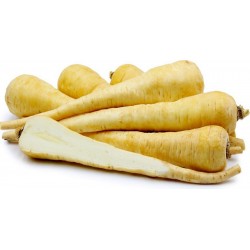
10.000 Seeds Long White...
Ціна
10,00 €
(SKU: P 123 (20g))
Seeds Gallery EU,
5/
5
<h2><strong>10.000 Seeds Long White Smooth Parsnip</strong></h2>
<h2><span style="color:#ff0000;"><strong>Price for Package about 10,000 (20 g) seeds.</strong></span></h2>
<div>One of the most popular and reliable varieties, producing Long rooted and broad shouldered roots making it suitable for almost all soil types. A high yielder, it has good canker resistance and will deliver lots of fine, medium length, smooth skinned, high quality, fine flavoured parsnips.</div>
<table cellspacing="0" cellpadding="0" border="1"><tbody><tr><td colspan="2" width="100%" valign="top">
<p><span style="color:#008000;"><strong>Sowing Instructions</strong></span></p>
</td>
</tr><tr><td valign="top" nowrap="nowrap">
<p><span style="color:#008000;"><strong>Propagation:</strong></span></p>
</td>
<td valign="top">
<p><span style="color:#008000;">Seeds</span></p>
</td>
</tr><tr><td valign="top" nowrap="nowrap">
<p><span style="color:#008000;"><strong>Pretreat:</strong></span></p>
</td>
<td valign="top">
<p><span style="color:#008000;">0</span></p>
</td>
</tr><tr><td valign="top" nowrap="nowrap">
<p><span style="color:#008000;"><strong>Stratification:</strong></span></p>
</td>
<td valign="top">
<p><span style="color:#008000;">0</span></p>
</td>
</tr><tr><td valign="top" nowrap="nowrap">
<p><span style="color:#008000;"><strong>Sowing Time:</strong></span></p>
</td>
<td valign="top">
<p><span style="color:#008000;">all year round </span></p>
</td>
</tr><tr><td valign="top" nowrap="nowrap">
<p><span style="color:#008000;"><strong>Sowing Depth:</strong></span></p>
</td>
<td valign="top">
<p><span style="color:#008000;">3 cm</span></p>
</td>
</tr><tr><td valign="top" nowrap="nowrap">
<p><span style="color:#008000;"><strong>Sowing Mix:</strong></span></p>
</td>
<td valign="top">
<p><span style="color:#008000;">Coir or sowing mix + sand or perlite</span></p>
</td>
</tr><tr><td valign="top" nowrap="nowrap">
<p><span style="color:#008000;"><strong>Germination temperature:</strong></span></p>
</td>
<td valign="top">
<p><span style="color:#008000;">15-25 ° C</span></p>
</td>
</tr><tr><td valign="top" nowrap="nowrap">
<p><span style="color:#008000;"><strong>Location:</strong></span></p>
</td>
<td valign="top">
<p><span style="color:#008000;">bright + keep constantly moist not wet</span></p>
</td>
</tr><tr><td valign="top" nowrap="nowrap">
<p><span style="color:#008000;"><strong>Germination Time:</strong></span></p>
</td>
<td valign="top">
<p><span style="color:#008000;">up to 3 weeks</span></p>
</td>
</tr><tr><td valign="top" nowrap="nowrap">
<p><span style="color:#008000;"><strong>Watering:</strong></span></p>
</td>
<td valign="top">
<p><span style="color:#008000;">Water regularly during the growing season</span></p>
</td>
</tr><tr><td valign="top" nowrap="nowrap">
<p><span style="color:#008000;"><strong> </strong></span></p>
</td>
<td valign="top">
<p><br /><span style="color:#008000;"><em>Copyright © 2012 Seeds Gallery - Saatgut Galerie - Galerija semena. </em><em>All Rights Reserved.</em></span></p>
</td>
</tr></tbody></table>
P 123 (20g)

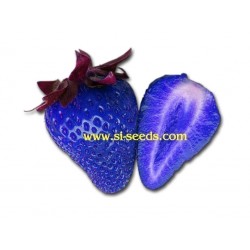
African Blue Strawberries...
Ціна
4,50 €
(SKU: V 1 B)
Seeds Gallery EU,
5/
5
<h2><strong>AFRICAN BLUE STRAWBERRIES SEEDS</strong></h2>
<h2><strong><span style="color:#ff0000;">Price for Package of 5 seeds.</span></strong></h2>
<p>Scientists are genetically modifying strawberries in order to allow them to resist freezing temperatures better. They're doing it by artificial transfer of genes from a species of fish called the Arctic Flounder Fish. The Arctic Flounder Fish produces an anti-freeze that allows it to protect himself in freezing waters.<br /><br />They isolated the gene that produces this anti-freeze and introduced it to the strawberry. The result is a strawberry that looks blue and doesn't turn to mush or degrade after being placed in the freezer. While they're not in production, research is ongoing.</p>
<p><strong><a href="http://buzz.naturalnews.com/000061-food-science-GMO.html" target="_blank" rel="noreferrer noopener">http://buzz.naturalnews.com/000061-food-science-GMO.html</a></strong></p>
V 1 B

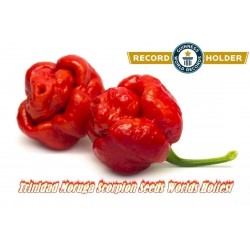
Trinidad Moruga Scorpion...
Ціна
1,95 €
(SKU: C 1 R)
Seeds Gallery EU,
5/
5
<h2><strong>Trinidad Moruga Scorpion Seeds Worlds Hottest</strong></h2>
<h2><strong><span style="color:#ff0000;">Price for Package of 5, 10, 25 seeds.</span> </strong></h2>
<p><strong>As you can see yourself from our photos, that the seeds are from our own plants (organically grown) and you know what you will get from the seeds you buy from us...</strong></p>
<p>The Trinidad Moruga Scorpion (Capsicum Chinense), endemic to the district of Moruga in Trinidad and Tobago, is currently the world's hottest Chili pepper cultivar. The New Mexico State University's Chili Pepper Institute has identified the Trinidad Moruga Scorpion as the newest hottest chili pepper in the world as of February 2012. According to the New Mexico State University Chili Institute, the Trinidad Moruga Scorpion ranks as high as 2,009,231 SHU on the Scoville scale, making it the hottest chili pepper in the world to date.</p>
<p>Paul Bosland, a renowned chili pepper expert and director of the Chili Institute, said, "You take a bite. It doesn't seem so bad, and then it builds and it builds and it builds. So it is quite intense."</p>
<p>The golf ball-sized chili pepper scored the highest among a handful of chili cultivars reputed to be among the hottest in the world. Its mean heat topped more than 1.2 million units on the Scoville heat scale, while fruits from some individual plants reached 2 million heat units.</p>
<p>Leaving out the heat the Moruga Scorpion has a tender fruitlike flavor, which makes it a unique sweet-hot combination.</p>
<div><em><strong> Video:</strong></em> <span style="color:#0000ff;"><a href="http://www.youtube.com/watch?v=P2iWb6a8QD4" target="_blank" rel="noreferrer noopener"><span style="color:#0000ff;">http://www.youtube.com/watch?v=P2iWb6a8QD4</span></a></span></div>
<h3>Scoville ratings of peppers </h3>
<h3><strong><span style="color:#0000ff;"><a href="http://en.wikipedia.org/wiki/Trinidad_Moruga_Scorpion" target="_blank" rel="noreferrer noopener"><span style="color:#0000ff;">http://en.wikipedia.org/wiki/Trinidad_Moruga_Scorpion</span></a></span></strong></h3>
C 1 R

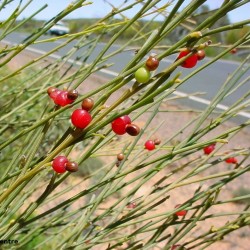
Weeping Cherry Seeds...
Ціна
1,35 €
(SKU: V 61)
Seeds Gallery EU,
5/
5
<meta http-equiv="Content-Type" content="text/html; charset=UTF-8" />
<h2><strong>Weeping Cherry Seeds (Exocarpos sparteus)</strong></h2>
<h2><span style="color: #ff0000;"><strong>Package of 2 seeds.</strong></span></h2>
<div>Exocarpos sparteus is an Australian endemic plant species, commonly known as the Broom Ballart or native cherry. The species is found in all states of mainland Australia.</div>
<div>A shrub, four metres tall, erect, with drooping branchlets, almost leafless. The species bears flowering branchlets, which may have small, greenish-yellow, and stalkless leaves. The flowers are just 1 mm across and of a similar colour, occasionally white. The fruit of this species is egg-shaped, pink or red, and between 4 and 5 mm long.</div>
<div>The habit of this plant is upright, becoming slightly curved, combining with the many regular branches to form a rounded aspect. The smooth and spherical appearance of the species is given by the droop of the branchlets, the similar colour and size of the leaves and flowers, and upcurving of the outward branches.</div>
<div>The specific name is derived from the Latin word esparto, referring to a kind of Spanish grass that was used for its fibre. It was first described by Robert Brown, in 1810, having collected the plants on his visit to King George Sound in 1802. One of the species' common names, Native Cherry, is given to another cogenor with an edible fruit, Exocarpos cupressiformis; both of these species are known as sorts of Ballart.</div>
<div>A shrub, four metres tall, erect, with drooping branches.</div>
<div>The fruit is egg-shaped, pink or red.</div>
<div>The tree look similar to a small cypress tree, but it has sweet, juicy fruits which are eaten fresh.</div>
<div>The sap was used by the Aboriginals as a treatment for snake bites.</div>
<table border="1" cellspacing="0" cellpadding="0">
<tbody>
<tr>
<td colspan="2" valign="top" width="100%">
<p><span style="color: #008000;"><strong>Sowing Instructions</strong></span></p>
</td>
</tr>
<tr>
<td valign="top" nowrap="nowrap">
<p><span style="color: #008000;"><strong>Propagation:</strong></span></p>
</td>
<td valign="top">
<p><span style="color: #008000;">Seeds</span></p>
</td>
</tr>
<tr>
<td valign="top" nowrap="nowrap">
<p><span style="color: #008000;"><strong>Pretreat:</strong></span></p>
</td>
<td valign="top">
<p><span style="color: #008000;">soak in water for 24 hours</span></p>
</td>
</tr>
<tr>
<td valign="top" nowrap="nowrap">
<p><span style="color: #008000;"><strong>Stratification:</strong></span></p>
</td>
<td valign="top">
<p><span style="color: #008000;">3 months in moist sowing mix at 2-5 ° C refrigerator</span></p>
</td>
</tr>
<tr>
<td valign="top" nowrap="nowrap">
<p><span style="color: #008000;"><strong>Sowing Time:</strong></span></p>
</td>
<td valign="top">
<p><span style="color: #008000;">all year round</span></p>
</td>
</tr>
<tr>
<td valign="top" nowrap="nowrap">
<p><span style="color: #008000;"><strong>Sowing Depth:</strong></span></p>
</td>
<td valign="top">
<p><span style="color: #008000;">0,5-1 cm</span></p>
</td>
</tr>
<tr>
<td valign="top" nowrap="nowrap">
<p><span style="color: #008000;"><strong>Sowing Mix:</strong></span></p>
</td>
<td valign="top">
<p><span style="color: #008000;">Coir or sowing mix + sand or perlite</span></p>
</td>
</tr>
<tr>
<td valign="top" nowrap="nowrap">
<p><span style="color: #008000;"><strong>Germination temperature:</strong></span></p>
</td>
<td valign="top">
<p><span style="color: #008000;">min. 20 ° C</span></p>
</td>
</tr>
<tr>
<td valign="top" nowrap="nowrap">
<p><span style="color: #008000;"><strong>Location:</strong></span></p>
</td>
<td valign="top">
<p><span style="color: #008000;">bright + keep constantly moist not wet</span></p>
</td>
</tr>
<tr>
<td valign="top" nowrap="nowrap">
<p><span style="color: #008000;"><strong>Germination Time:</strong></span></p>
</td>
<td valign="top">
<p><span style="color: #008000;">until it germinates </span></p>
</td>
</tr>
<tr>
<td valign="top" nowrap="nowrap">
<p><span style="color: #008000;"><strong>Watering:</strong></span></p>
</td>
<td valign="top">
<p><span style="color: #008000;">Water regularly during the growing season</span></p>
</td>
</tr>
<tr>
<td valign="top" nowrap="nowrap">
<p><span style="color: #008000;"><strong> </strong></span></p>
</td>
<td valign="top">
<p><br /><span style="color: #008000;"><em>Copyright © 2012 Seeds Gallery - Saatgut Galerie - Galerija semena. </em><em>All Rights Reserved.</em></span></p>
</td>
</tr>
</tbody>
</table>
V 61 (2 S)

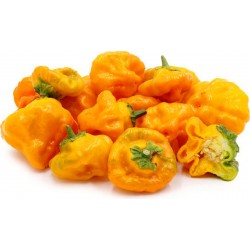
Jamaican Hot Yellow Chili...
Ціна
2,05 €
(SKU: C 35)
Seeds Gallery EU,
5/
5
<h2><strong>Jamaican Hot Yellow Chili Seeds</strong></h2>
<h2><span style="color:#ff0000;"><strong>Price for Package of 5 seeds.</strong></span></h2>
<p>Scotch Bonnet peppers (or Bahamian, Bahama Mama, Jamaican Hot or Martinique Peppers) are EXTREMELY HOT and closely related to the Habanero but less common. The flavor is slightly different, which some people prefer. Like the Habanero, Scotch Bonnets are spherical, although more squashed in shape and smaller. </p>
<p>Native to the Caribbean, Scotch Bonnet Peppers can be found in green, yellow, orange, white, brown and red as well as multi-toned. This is the YELLOW variety which is even more difficult to find than the red variety and other varieties.</p>
<p><strong><strong>see also our video:</strong></strong></p>
<div>
<div><span style="color:#0000ff;"><strong><a href="http://www.youtube.com/watch/?v=HxtWF_w9UDo&feature=plcp" target="_blank" rel="noreferrer noopener"><span style="color:#0000ff;">http://www.youtube.com/watch?v=HxtWF_w9UDo&feature=plcp</span></a></strong></span></div>
</div>
<div> </div>
<div>
<div><strong>Video 2:</strong></div>
</div>
<div><span style="color:#0000ff;"><strong><a href="http://www.youtube.com/watch/?v=viwzADvNyzQ&feature=plcp" target="_blank" rel="noreferrer noopener"><span style="color:#0000ff;">http://www.youtube.com/watch?v=viwzADvNyzQ&feature=plcp</span></a></strong></span></div>
C 35






